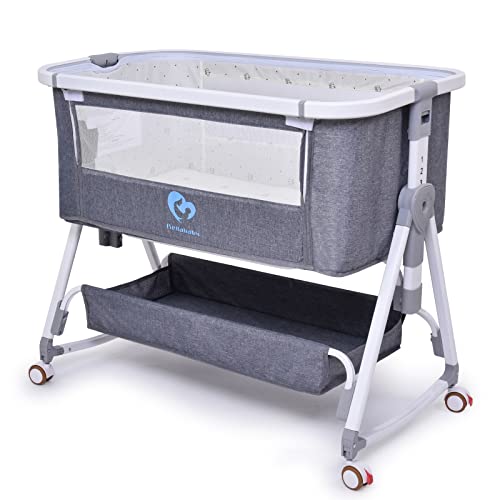How to Choose a Sale Cot
Mortuary cots are a vital piece of equipment for funeral homes and hospitals. They allow staff to transport bodies safely and respectfully. They also provide a dignified and comfortable resting area for the body.
COTS products play an important part in the federal marketplace however they can be difficult to manage. This blog will examine how COTS are integrated into GSA schedules and other government procurement rules.
Mini Cot Bed -effectiveness
The use of commercial-off-the-shelf (COTS) products allows procurement agencies to gain efficiencies by purchasing items that are readily available from the marketplace. This reduces the development time and also the life-cycle cost. It also allows procurement agencies to take advantage of the latest advances in technology and industry experience.
It is crucial to keep in mind that COT designations are subjective, and different organizations may interpret COTS items in a different way. This can be problematic for a company that relies on a uniform method to calculate accurate government prices. GPOs and wholesalers, for instance, typically have lists that are not the same as the list used by manufacturers to determine prices for government. A properly documented SOP and COTS reference library are critical elements to implement an efficient and consistent process for assigning COTs.

Reliability
Sale cots are an essential purchase for mortuary facilities. It must be durable and strong enough to withstand high-use. It should also be easy to transport and set up. The manufacturer should provide good support for customers in the event of any after-sales issues. Also, get feedback from your staff before making the final decision. They are those who use the cots and can determine if the cot is durable and reliable.
Wholesalers and GPOs typically assign COT codes that do not match the manufacturer that supplies the list. This is due to a variety of factors, including changes in business models and mergers and acquisitions. This poses challenges to the application of an unreliable lens to the classification of COTS.
Durability
Durability is key for sale cots because they must be able to endure the rigors of frequent use and transportation. Many funeral homes use these cots for displaying body remains, so they need to be strong enough to withstand the weight of the casket as well as other items placed on top of them. Cots must also be resistant against corrosion and possess an easy-to-assemble, sturdy structure. It is also essential to select a vendor that offers customer support and is able to assist with any issues that might arise following the purchase.
Solid wood cots are among the best baby furniture, because they're durable and less prone to contain toxic chemicals or off-gassing than composite materials like MDF or Chipboard. In addition, they're more attractive than the cheaper alternatives.
If Mini Cot Bed seeking a cot that can double as a lounger, the Westport model from Silver Cross might be the ideal choice for you. The cot is made from an extremely durable fabric, and is available in three different levels of height for growing children. The instructions may be confusing, but this cot is worth it once you understand them.
The Helinox Cot One is the most lightweight cot we tested, but it's not as durable as the other models we've test. It's also more difficult to assemble since it's made up of many components. However, it's very comfortable and is a great choice for backpackers. It's also 14 oz lighter than the Thermarest Luxury Lite and Sleep Rite.
Safety
If you offer cots, it is important that they comply with the safety standards. This is an essential step to avoid injuries and deaths for children. The best method to do this is by confirming with your supplier that their products have been independently tested. Request your supplier to send you a copy of their test results. You can also schedule your own testing.
It's crucial to verify the safety of your cot prior sleeping your child in it, regardless of whether it's new or used. Also, look for warnings and labels that give information, and an official certificate from the manufacturer. It should also be free of sharp edges, protrusions or gaps which could cause injury to the child's foot or finger. There should also be no footholds that children can use to climb out of the cot.
When choosing a cot, make sure the mattress is flat and clean. It should fit perfectly without gaps, and the bottom edge of the lowest rail should not be higher than 30 millimetres from the mattress base. If the cot has an adjustable base, be sure that it is in its lowest position.
Also, make sure that the slats or filler bars are securely fixed and don't have any small holes that could catch clothing. Also, there shouldn't be any bolts, nuts, or corner posts sticking out over 5 millimeters that could catch a child's fingers and cause strangulation. Also, make sure that the crib is free of draperies and blinds which could be pulled off by tiny hands.
Lastly, look for a label which indicates that the cot has been tested to the required standards and is compliant with Australian Standards AS/NZS 2172:2003 Cots for household use-safety requirements. This is the only guarantee that the cot is safe and suitable for sleeping. It is unlawful for retailers, antique stores and second-hand shops to offer antique cots without labels or certificates.
Accidents can occur, despite the fact that most designers and manufacturers try to ensure that their products are safe. Older cots used by other children might not be up to current safety standards and pose risks of suffocation, strangulation, or ingestion of foreign bodies.
